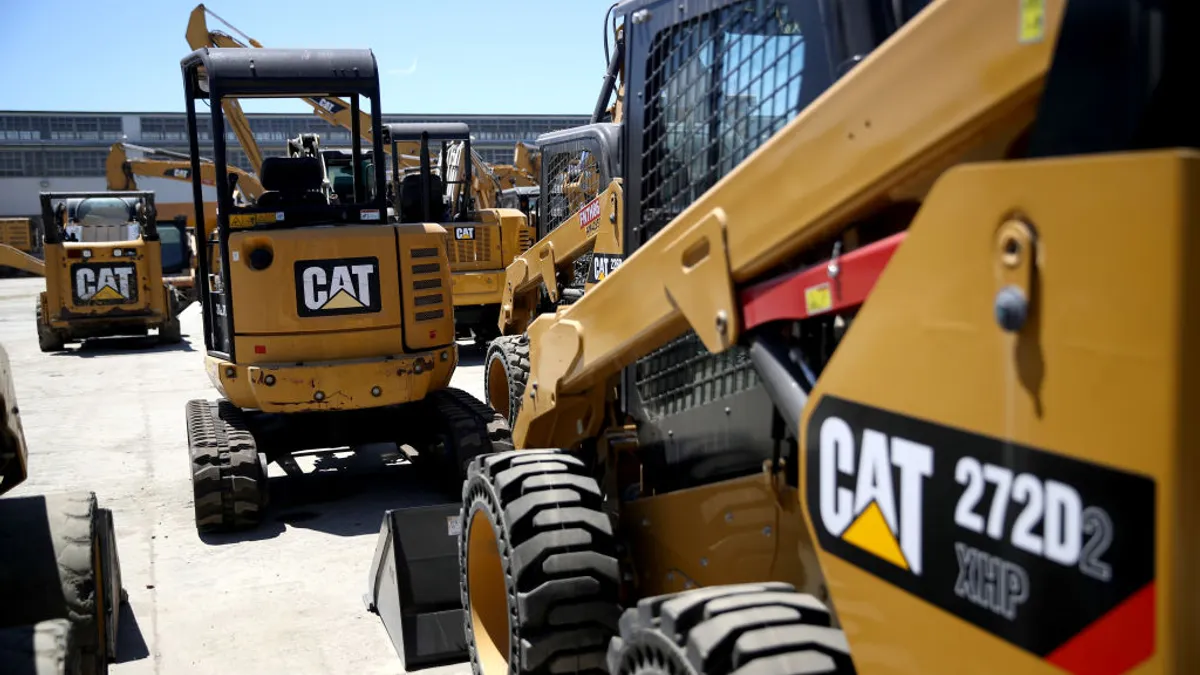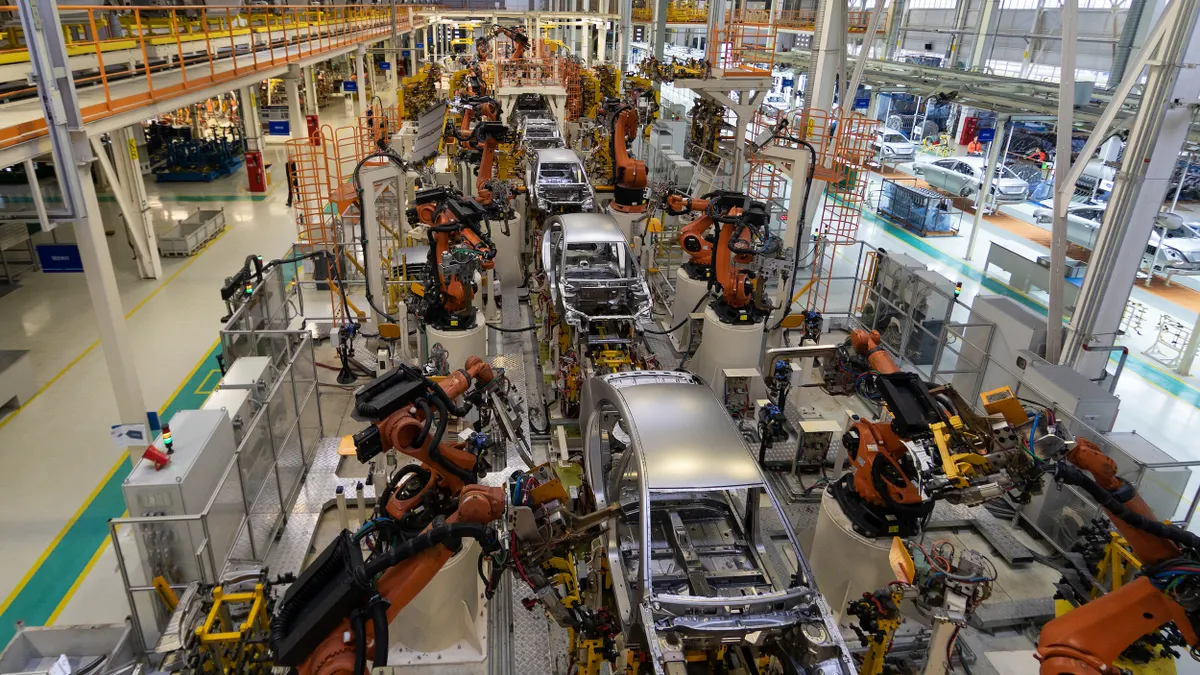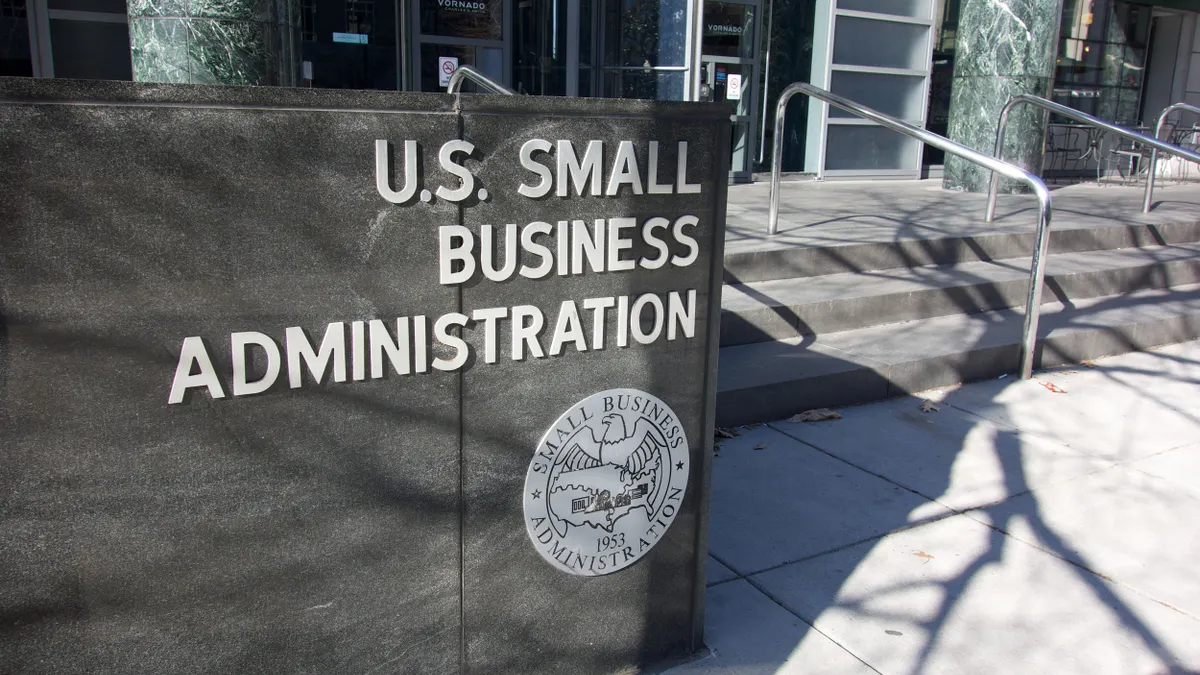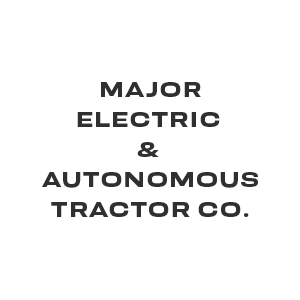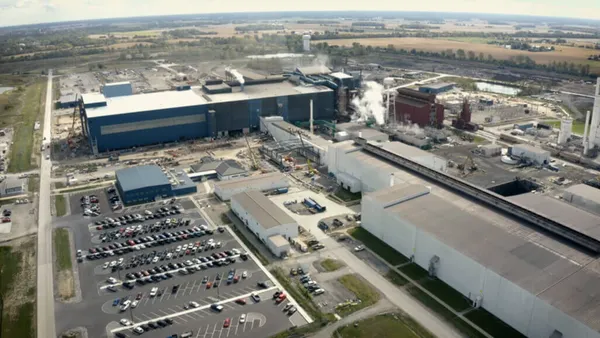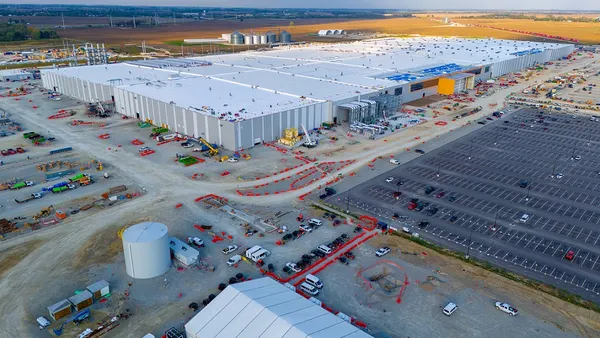Dive Brief:
- Caterpillar is bracing for tariff headwinds between $1.3 billion and $1.5 billion for the year despite mitigation and cost control efforts, CFO Andrew Bonfield said during a second quarter earnings call Tuesday.
- The construction and mining equipment maker saw a nearly $350 million tariff impact in Q2, and is expecting higher trade-related costs in Q3 and Q4, Bonfield said. The Trump administration’s country-specific tariffs are set to take effect Aug. 7, barring any extensions.
- Caterpillar generated total Q2 sales and revenue of $16.6 billion, down 1% from last year. This was driven by declines in the company’s construction and mining segments, and buoyed by positive energy and transportation results.
Dive Insight:
Although affected by tariffs, Caterpillar saw solid demand for its products as lower manufacturing costs offset volume gains in the quarter. The company is seeing robust activity from its power generation business, supported by growing demand for AI data centers. The company’s Q2 net profit fell 19% to $2.2 billion from last year.
For the construction business, Caterpillar reported unfavorable pricing and lower sales volumes related to dealer inventory changes in North America and Latin America. Meanwhile, sales increased in the Asia Pacific and Europe-Africa-Middle East regions. The construction unit made a Q2 profit of $1.2 billion, down 29% from a year ago.
Unfavorable pricing also weighed on Caterpillar’s resource industries business, responsible for mining and quarry customers. The segment made a profit of $537 million, down 25% year-over-year. The company cited tariffs, lower sales volumes and unfavorable manufacturing costs as factors in the decline.
“While we have taken initial mitigating actions to reduce the impact, tariff and trade negotiations continue to be fluid,” CEO Joseph Creed said during the call. “We will remain flexible and we intend to implement longer-term actions once there is sufficient certainty. We are considering all options to further reduce the impact of tariffs going forward.”
As heavy machinery sales slipped, Caterpillar had robust order activity in the energy and transportation segment. Power generation, for example, saw quarterly sales grow 19% from a year ago, due to demand for reciprocating engines for data centers, Creed said.
“We continue to stay close to our largest data center customers and receive regular feedback on their long-term demand,” Creed added.
The energy and transportation segment posted a Q2 profit of $1.6 billion, up 4% YoY. Caterpillar also saw its financial products segment profit grow 4% to $1 billion over the same period.
Looking ahead, Creed said Caterpillar is forecasting Q3 sales to grow moderately versus last year, with higher volumes across all three of the company’s major segments. However, tariffs will squeeze profit margins lower than last year, he said. Creed also forecasted full-year sales and revenue to be up slightly over 2024.
Caterpillar is implementing a number of quick, easily reversible actions to mitigate the tariffs impact. It’s cutting discretionary spending and leaning into limited dual-sourcing where beneficial, Creed said. The company is also working on making more goods compliant under the U.S.-Mexico-Canada Agreement, he added.
“The net impact of tariffs was around the top end of our estimated range for the quarter and is likely to be a more significant headwind to profitability in the second half of 2025,” Creed said.


